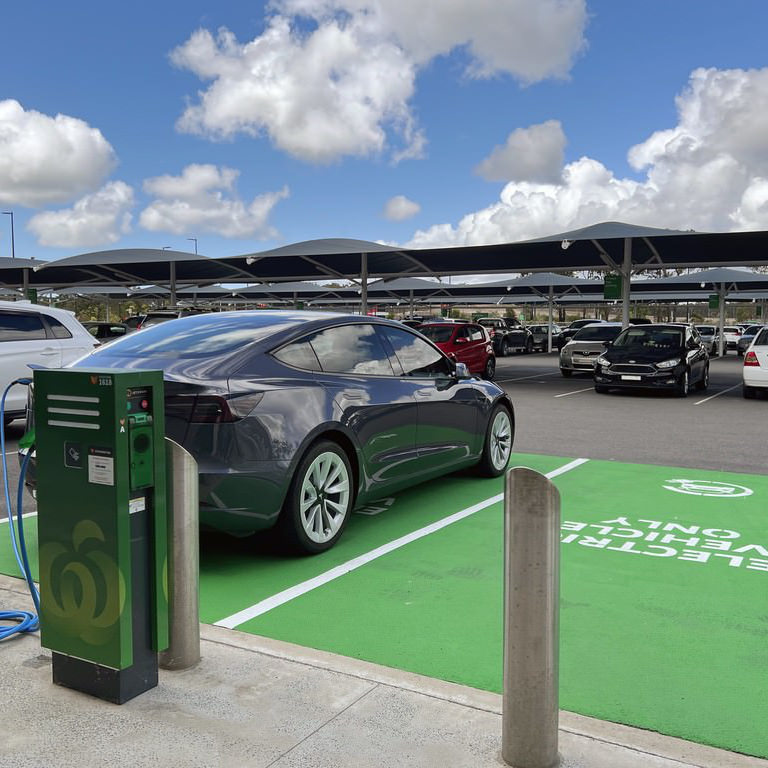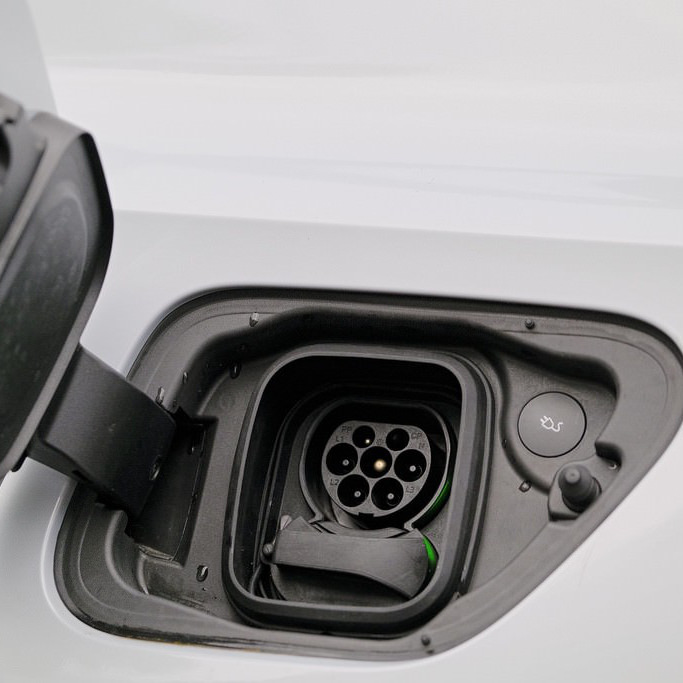The story of General Motors’ EV1 is a compelling chapter in automotive history — one that blends innovation, controversy, and a legacy that continues to shape the electric vehicle (EV) landscape today.
Here’s a look at the EV1’s journey, from its ambitious beginnings to its controversial end, and the lasting impact it left on the world.
Origins and Development: A Vision for a Cleaner Future
The EV1’s roots trace back to the late 1980s, when environmental concerns and regulatory pressures began to mount in the United States. In 1990, General Motors (GM) unveiled the “Impact” concept car at the Los Angeles Auto Show, a direct response to California’s new Zero Emission Vehicle (ZEV) mandate, which required major automakers to offer a percentage of zero-emission vehicles if they wanted to continue selling cars in the state. The Impact, developed in partnership with AeroVironment and inspired by GM’s solar-powered Sunraycer, was met with enthusiasm and demonstrated that a practical, modern electric car was within reach.
Encouraged by the positive reception and regulatory pressure, GM committed to producing a consumer-ready electric vehicle. The result was the EV1, a purpose-built, all-electric car that would become the first of its kind from a major automaker in the modern era.
Key Features and Specifications: Engineering a Pioneer
The EV1 was a technological marvel for its time, featuring several innovations that would later become standard in the EV industry:
- Body and Design: The EV1 was a two-seat, two-door coupe with an aluminum spaceframe and plastic body panels, resulting in a lightweight yet sturdy structure. Its aerodynamic teardrop shape achieved a drag coefficient of just 0.19, a record at the time.
- Powertrain: It used a 137-horsepower (102 kW) three-phase AC induction motor, delivering 110 lb-ft of torque instantly from 0 to 7,000 rpm. Power was sent to the front wheels via a single-speed reduction gearbox.
- Batteries: The first-generation (Gen I) EV1s used 16.5–18.7 kWh lead-acid batteries, offering a real-world range of 85–130 kilometers per charge. The second-generation (Gen II) models, introduced in 1999, featured 26.4 kWh nickel-metal hydride (NiMH) batteries, extending the range to 160–225 kilometers.
- Charging: The EV1 introduced the Magne Charge inductive charging system, which allowed for safe, weatherproof charging at home or at public stations.
- Other Innovations: The car boasted regenerative braking, keyless ignition, a heat pump HVAC system, and low-rolling-resistance tires.
Market Launch and Customer Experience
GM began leasing the EV1 in late 1996, initially in California and Arizona, later expanding to a few other markets. The car was never offered for sale — only through a lease program, with monthly payments ranging from $399 to $549. In total, just over 1,100 EV1s were produced between 1996 and 1999.
Drivers praised the EV1 for its smooth, quiet ride, quick acceleration (0–60 mph in about 8 seconds), and the convenience of home charging. However, the car’s limited range, two-seat configuration, and lack of a purchase option restricted its appeal to a niche market.
The Controversial End: Why Was the EV1 Discontinued?
Despite a devoted fan base and positive press, GM discontinued the EV1 program in 2002. The reasons for this decision remain a subject of debate and controversy:
- Economic Factors: GM cited high production costs, limited consumer demand, and the inability to make the program profitable. Each EV1 reportedly cost GM far more to build than the lease payments could recoup.
- Regulatory Changes: California’s ZEV mandate was weakened after legal challenges from automakers, reducing the pressure to continue producing electric vehicles.
- Technical Limitations: Battery technology of the era limited range and performance, and public charging infrastructure was sparse.
- Conspiracy Theories: Some allege that GM, under pressure from the oil industry and internal interests, deliberately sabotaged the EV1 to protect profits from gasoline vehicles and spare parts.
When the leases expired, GM refused to sell the cars to lessees, instead recalling and crushing nearly all of them. Only about 40 EV1s were spared, donated to museums and universities with their drivetrains disabled.
Cultural Impact and Legacy
The abrupt end of the EV1 sparked outrage among environmentalists, lessees, and EV advocates. The story was immortalized in the 2006 documentary Who Killed the Electric Car?, which explored the various forces that led to the program’s demise and became a rallying point for the modern EV movement.
Key aspects of the EV1’s legacy include:
- Technological Influence: The EV1 pioneered many features now standard in electric vehicles, such as regenerative braking, advanced aerodynamics, and efficient power electronics.
- Industry Impact: The program’s cancellation is widely seen as a missed opportunity for GM, which could have established itself as a leader in electric mobility. Instead, companies like Tesla would later fill that void.
- Public Awareness: The EV1’s story raised public consciousness about electric vehicles, environmental issues, and the challenges of transitioning away from fossil fuels.
- Policy and Innovation: The lessons learned from the EV1 influenced subsequent EV programs, including the Chevrolet Volt and Bolt, and helped shape regulatory and market approaches to EV adoption.
Further Reading and Documentaries
For those interested in a deeper dive, several resources provide detailed accounts of the EV1’s development and legacy:
- Book: The Car That Could: The Inside Story of GM’s Revolutionary Electric Vehicle by Michael Shnayerson offers an in-depth look at the EV1’s creation.
- Documentary: Who Killed the Electric Car? (2006) is available on various streaming platforms and remains the definitive film on the subject.
- Museum Collections: Surviving EV1s can be found in institutions like the Smithsonian and The Henry Ford Museum.
Final Thoughts
The General Motors EV1 was a bold experiment that arrived before its time. While its commercial life was short and its end controversial, the EV1’s influence on automotive technology, environmental policy, and public perception of electric vehicles is undeniable. Today’s thriving EV market owes much to the lessons — both technical and political — learned from the EV1’s brief but impactful existence.
References:
- General Motors EV1 - Wikipedia
- Who Killed The Electric Car? - Apple TV
- Who Killed The Electric Car? - Prime Video
- Who Killed the Electric Car? (2006) - Plot - IMDb
- What happened to the General Motors EV1? - NPR
- Sunraycer - Wikipedia
- The General Motors EV1 Program
- Rearview Mirror: The rise and fall of the General Motors EV-1
- Here’s What Really Happened To The GM EV1 Electric Car
- Mythbusting: The truth about the GM EV1
- The Short History of GM’s First Electric Car
- How General Motors’ First Electric Car Failed
- GM EV1: The OG of Electric Cars | Green Car Journal
- GM EV1 : The Pioneering General Motors EV1: A Revolution in Electric Vehicle Technology
- [PDF] GENERAL MOTORS EV1 - Advanced Vehicle Testing Activity
- Tested: 1997 GM EV1 Proves to Be the Start of Something Big
- The EV1 Was GM’s First Modern EV. This Retro Review … - InsideEVs
- [PDF] Guide to the General Motors EV1 Records - siris
- General Motors EV1 - Electric Vehicles News
- The GM EV1 Electric Car Lives On in Today’s EVs - MotorTrend
- 1998 GM EV1 Gen II Lead-Acid specifications, technical data, performance
- General Motors EV1 - AutoZine
- The Car You Can’t LEGALLY Own SOLD Today For $104,000
- EV1 Electric Cars - West Hills Collision Center
- ‘That Was Really Quite A Car.’ GM President Admits Canceling The …
- Years before Tesla and Rivian, GM gifted us with the EV1
- How GM’s EV1 experiment proved to be the false dawn of the electric car
- Why Did General Motors Scrap the EV1? | GetJerry.com
- Who Killed the Electric Car?
- Revolutionizing the Road: The Impact of the 1996 General Motors EV1 Release on Electric Vehicle Innovation | Volts & Volts
- A Walk Down Memory Lane: The GM EV1 - Top Speed
- How The GM EV1 Kicked Off A Modern EV Revolution In The 1990s
- Report: With EV1, GM sparked the era of the electric car but didn’t follow through
- A significant technological, historical and social event: How GM’s EV1 was received in its day
- EV1: A legacy in a new light
- The car that could : the inside story of GM’s revolutionary electric vehicle | WorldCat.org








